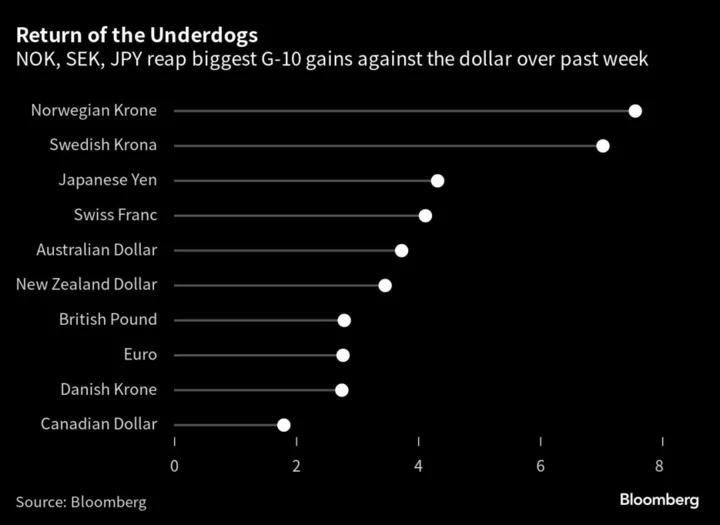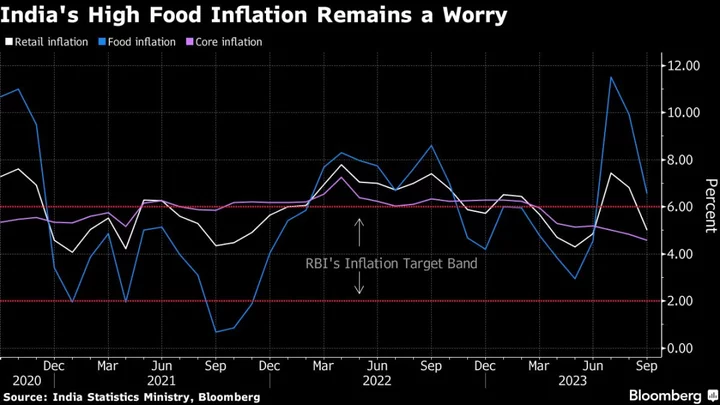HSBC Holdings Plc’s decision to quit the 1.1 million square foot skyscraper that bears its name in Canary Wharf in favour of a smaller office in the City of London is the latest blow to the east London financial district that’s becoming a less popular choice for businesses navigating a world reshaped by the pandemic.
The desire by firms to lure back staff back to the office is playing out in the shifting fortunes of London’s major office districts and is landing firmly in favor of London’s buzziest areas. In the changing office landscape, Canary Wharf is increasingly losing out to the City of London and the West End.
With the planned departure of one of its biggest tenants, questions about the future appeal of Canary Wharf are emerging even though it remains a cheaper option. While HSBC will occupy about half the amount of space in its new headquarters, rents for the best buildings in the City of London are about 50% higher than those in Canary Wharf, limiting the savings the bank will achieve from reducing its footprint.
“The appeal to employees seems now to be prevailing over the low rent,” Green Street analyst Marie Dormeuil said. “HSBC follows Clifford Chance vacating to go to the City, question marks remain for others.”
Cheaper rents and the ability to build large, highly specified modern office towers helped bring Canary Wharf to life at a time when the ancient City of London district was expensive and highly restricted. But in the three decades that have followed, wages have become a far larger cost for businesses than rent, which has scarcely changed in real terms.
The West End, home to London’s best restaurants and stores, has a vacancy rate of about 6.6%, while 9.6% of the City of London’s offices are empty, according to broker Savills Plc. By comparison, the vacancy rate in Canary Wharf is about 15%, according to Green Street.
A representative for Canary Wharf Group, which is jointly owned by Qatar and Brookfield, declined to comment.
HSBC has been looking for alternatives to its docklands skyscraper as it looks for a more flexible workspace and adapts to the post-Covid cityscape, according to a memo sent last year by the bank’s chief operating officer, John Hinshaw. HSBC said in a memo on Monday its preferred option is BT Group Plc’s former head office near St Paul’s Cathedral.
It means that the bank is moving to a building half the size that’s in the heart of the Square Mile and will feature a publicly accessible rooftop restaurant, wildflower meadow, landscaped terraces and a swimming pool. The project is scheduled for completion at the end of next year, allowing time for HSBC to fit out the offices ahead of its Canary Wharf lease expiring in 2027.
Clifford Chance LLP, the Magic Circle law firm which moved its headquarters to Canary Wharf in 2003, is swapping the docklands for the City when its lease expires in 2028. Citigroup Inc. is shrinking from two buildings to one. The future of Credit Suisse’s Canary Wharf headquarters also remains uncertain following its takeover by UBS Group AG.
“The exit by HSBC from Canary Wharf could herald further significant departures raising longer term questions about the suitability of the estate for an office-led community,” said Sue Munden, senior analyst at Bloomberg Intelligence.
Canary Wharf grew out of an initiative to revitalize the docklands industrial district on the Isle of Dogs that had fallen into decline. Prime Minister Margaret Thatcher’s government created the Docklands Development Corporation in 1981 and eventually teamed up with Canadian property tycoon Paul Reichmann to create a new financial center. Construction began in 1988 and the first banks arrived in 1991.
“In the 1990s, Canary Wharf was billed as: It will feel like Venice and work like New York, as City of London spill-over space just 5 kilometers east,” Jefferies’ analyst Mike Prew said. “It is now optimistically branded as a summer destination,” he added, citing recent advertisements for the district which owners Qatar and Brookfield are attempting to reposition.
The district has long been attempting to pivot away from banks as its dominant source of income, the peril of which was highlighted in the global financial crisis as major occupiers including Bear Stearns and Lehman Brothers disappeared. By the time the Brexit vote delivered another shock to London’s status as a financial hub in 2016 it had reduced the proportion of its rent that came from banks to less than 50%, a figure that has since fallen further.
In their place it is building rental apartments that have proved popular with overseas students and young professionals keen for high-quality buildings that are professionally managed and in a large privately owned and run estate. It is also attempting to lure life sciences companies to the area, with plans for a vast new research hub.
With the coronavirus pandemic ushering in widespread hybrid working even among financial firms, demand for offices is also evolving. Businesses are now placing more emphasis on amenities and lifestyle and less on cost, with higher rents offset by less overall square footage. That’s encouraged a series of long-term tenants to move back to more central parts of London that are easier for staff to access and offer more entertainment and eating options.
--With assistance from Harry Wilson and Tom Metcalf.









